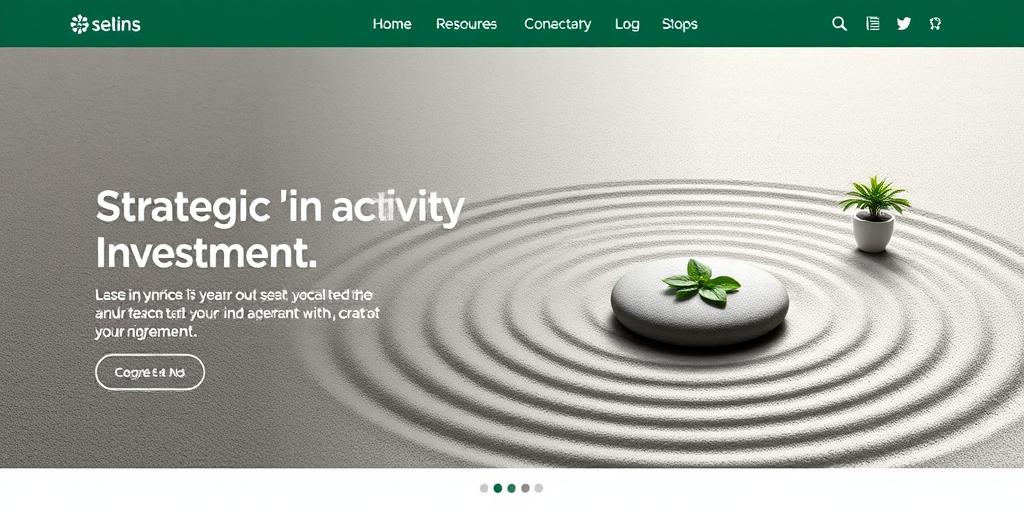The Art of Strategic Inactivity: Why Doing Nothing Can Boost Your Investments
In the fast-paced world of finance, where information overload and constant market fluctuations are the norm, it might seem counterintuitive to suggest that doing nothing can be a powerful investment strategy. However, strategic inactivity, or the art of knowing when not to act, can be a crucial element in achieving long-term investment success. This post explores the concept of strategic inactivity and how it can benefit your investment portfolio.
Understanding Strategic Inactivity
Strategic inactivity is not about ignoring your investments altogether. Instead, it involves making a conscious decision to refrain from making frequent changes to your portfolio, especially in response to short-term market noise. It's about having a well-thought-out investment plan and sticking to it, even when your emotions might tempt you to do otherwise.
The Pitfalls of Overactive Trading
- Transaction Costs: Frequent trading generates brokerage fees, commissions, and potential tax implications. These costs can eat into your returns over time.
- Emotional Decision-Making: Reacting to market volatility often leads to buying high and selling low, a surefire way to underperform the market.
- Missing the Big Picture: Constantly tinkering with your portfolio can distract you from your long-term investment goals.
- Increased Risk of Errors: The more you trade, the higher the chances of making mistakes.
The Benefits of Doing Nothing
- Reduced Costs: By minimizing trading activity, you'll significantly lower transaction costs, allowing more of your capital to work for you.
- Emotional Stability: A buy-and-hold strategy, combined with periodic rebalancing, helps you avoid impulsive decisions driven by fear or greed.
- Tax Efficiency: Lower trading activity can reduce your tax burden by minimizing capital gains taxes.
- Time Savings: Monitoring your portfolio less frequently frees up your time to focus on other aspects of your life.
- Compounding Returns: Staying invested for the long term allows you to benefit from the power of compounding, where your earnings generate further earnings.
Implementing Strategic Inactivity
- Develop a Solid Investment Plan: Create a diversified portfolio that aligns with your risk tolerance, time horizon, and financial goals.
- Set Realistic Expectations: Understand that market fluctuations are normal and that short-term losses are part of the investment journey.
- Automate Your Investments: Consider setting up automatic investments to ensure you consistently contribute to your portfolio.
- Rebalance Periodically: Review your portfolio annually or semi-annually to ensure it still aligns with your target asset allocation. Rebalance by selling assets that have become overweighted and buying those that are underweighted.
- Ignore the Noise: Tune out the constant stream of market news and opinions. Focus on the long-term fundamentals of your investments.
Conclusion
In the world of investing, sometimes the best course of action is to do nothing. Strategic inactivity, when implemented thoughtfully, can help you reduce costs, avoid emotional decision-making, and stay focused on your long-term goals. By resisting the urge to constantly tinker with your portfolio, you can harness the power of compounding and achieve greater investment success.
Long-term investing requires discipline and patience, and mastering the art of strategic inactivity is a key component of this approach. Remember, investing is a marathon, not a sprint. So, embrace the power of doing nothing and watch your portfolio grow over time.









